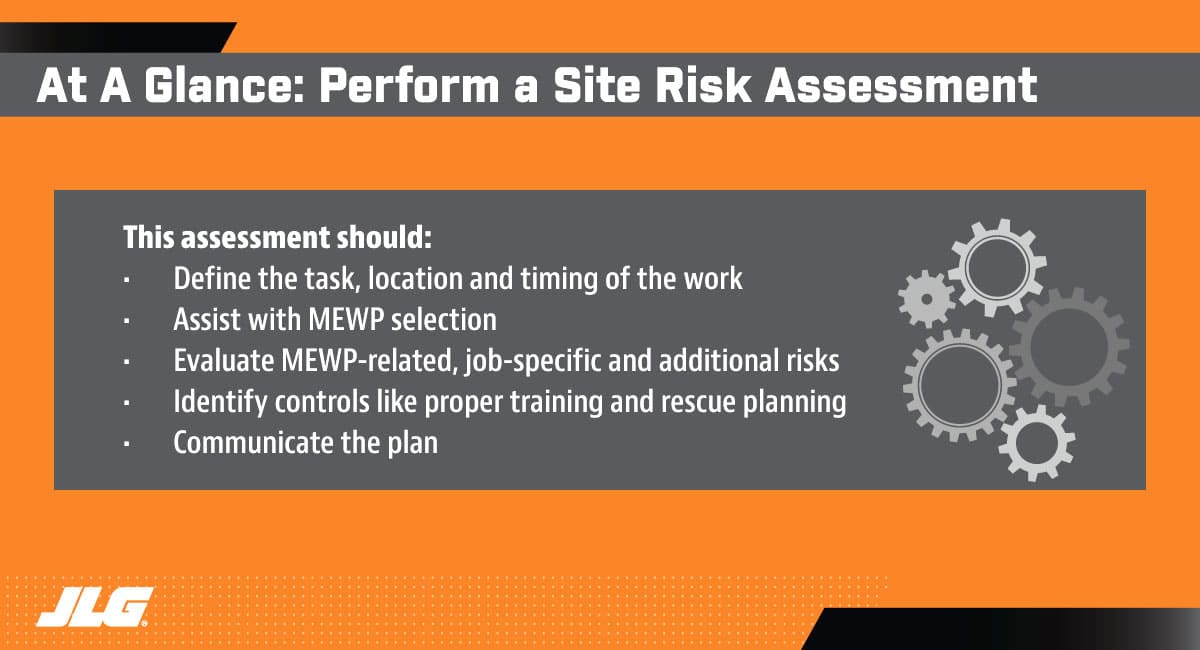 Rick Smith
Rick Smith
Senior Director of Product Training
____
JLG Industries
To develop an effective safe use program that complies with the new ANSI A92.22 & CSA B354.7 standards, it’s important to perform a site risk assessment before starting a job.
Here’s a step-by-step way to develop a standards-compliant site risk assessment…

Step 1 – Define the Task
Answer these questions:
- What specific tasks do I need to do to complete the job?
- Where will I be working?
- Will I need to transport machines?
- When does the work need to be finished?
- Are there times of the day I can’t work?
Step 2 – Select a MEWP
Choose a MEWP that best matches the needs of the applications:
- Boom Lift
- Scissor Lift
- Vertical Lift
Step 3 – Evaluate Risks
It is important to completely understand the equipment and the environment you are working in.
- MEWP-related: Working at height, staying within rated capacity
- Job-specific: Avoiding power lines, accessing hard-to-reach areas
- Additional: Keeping workers on the ground safe, preventing unauthorized use of equipment
Step 4 – Identify Controls
After the risks are identified, it is important to implement procedures and measures to mitigate them.
- Safe work procedures: Use correct PPE, ensure understanding of fall arrest systems
- Proper training: For operators, occupants, supervisors and maintenance personnel
- Smart scheduling: Organize the work in ways that minimize exposure to hazards
- Rescue planning: May include self-rescue, assisted rescue and/or technical rescue
Step 5 – Communicate
Once a safety plan has been developed, it should be shared with everyone who will be on site during the work. The updated standards outline new requirements for many roles as they relate to a safe use program.
- Operator is trained and authorized to operate the MEWP
- Occupant has basic knowledge of MEWP use and safety
- Supervisor monitors use of MEWP to ensure safety plan is followed
- Technician performs MEWP maintenance in line with manufacturer’s requirements
To learn more information about the ANSI and CSA standards Safe Use section, visit our resource center here.
Want to stay up to date with industry news and trends similar to this? Make sure you subscribe below to receive monthly updates from Direct Access with newly posted content so you never miss important information.